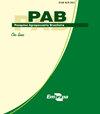蚕豆铁、锌相关微卫星标记的遗传参数及验证
IF 0.7
4区 农林科学
Q3 AGRICULTURE, MULTIDISCIPLINARY
引用次数: 0
摘要
摘要本研究的目的是估算普通豆籽粒铁和锌含量的遗传参数,评价其农艺性能,并验证与数量性状位点(qtl)连锁的微卫星分子标记(SSRs),以选择优质品系。在3种环境中对来自2个群体(‘BRS Requinte’בPorto Real’和‘BRS Requinte’× G2358)的116个品系和5个检查基因型进行了评价。用20个ssr对亲本和品系进行基因分型。在4个评价性状的同时选育中,铁浓度、锌浓度、产量和百粒重分别获得4.7%、2.8%、3.9%和0.9%的增益。因此,有可能选择结合感兴趣性状的理想表型的系。在“BRS Requinte”דPorto Real”群体中,唯一的多态性标记是bm154,这表明与这些标记关联的qtl可能已经固定,或者这些标记在使用的群体中没有关联。QTL定位的单标记分析显示,bm154与铁浓度仅在一种环境中存在关联,解释了14.5%的表型变异,这表明QTL与环境存在相互作用。本文章由计算机程序翻译,如有差异,请以英文原文为准。
Genetic parameters and validation of microsatellite markers associated with iron and zinc in common bean
Abstract The objective of this work was to estimate the genetic parameters, evaluate the agronomic performance, and validate the microsatellite molecular markers (SSRs) linked with quantitative trait loci (QTLs) for Fe and Zn concentrations in grains of common bean, in order to select superior lines. One hundred and sixteen lines from two populations ('BRS Requinte' × 'Porto Real' and 'BRS Requinte' × G2358) and five check genotypes were evaluated in three environments. The parents and lines were genotyped with 20 SSRs. In the simultaneous selection of the lines for the four evaluated traits, the gains from selection were 4.7% for Fe concentration, 2.8% for Zn concentration, 3.9% for yield, and 0.9% for 100-seed weight. Therefore, there is the possibility of selection of lines that combine desirable phenotypes for the traits of interest. The only polymorphic marker is BM 154 in the 'BRS Requinte' × 'Porto Real' population, indicating that the QTLs linked with the markers may already be fixed or that the markers are not associated in the used populations. The single-marker analysis of QTL mapping shows an association between BM 154 and Fe concentration in only one environment, explaining 14.5% of phenotypic variation, which indicates the occurrence of the interaction of QTLs with environments.
求助全文
通过发布文献求助,成功后即可免费获取论文全文。
去求助
来源期刊

Pesquisa Agropecuaria Brasileira
农林科学-农业综合
CiteScore
1.20
自引率
0.00%
发文量
45
审稿时长
9-18 weeks
期刊介绍:
Pesquisa Agropecuária Brasileira – PAB – is issued monthly by Empresa Brasileira de Pesquisa Agropecuária – EMBRAPA, affiliated to Ministry of Agriculture, Livestock and Food Supply. PAB publishes original scientific-technological articles on Plant Physiology, Plant Pathology, Crop Science, Genetics, Soil Science, Food Technology and Animal Science.
Its abbreviated title is Pesq. agropec. bras., and it should be used in bibliographies, footnotes, references and bibliographic strips.
 求助内容:
求助内容: 应助结果提醒方式:
应助结果提醒方式:


